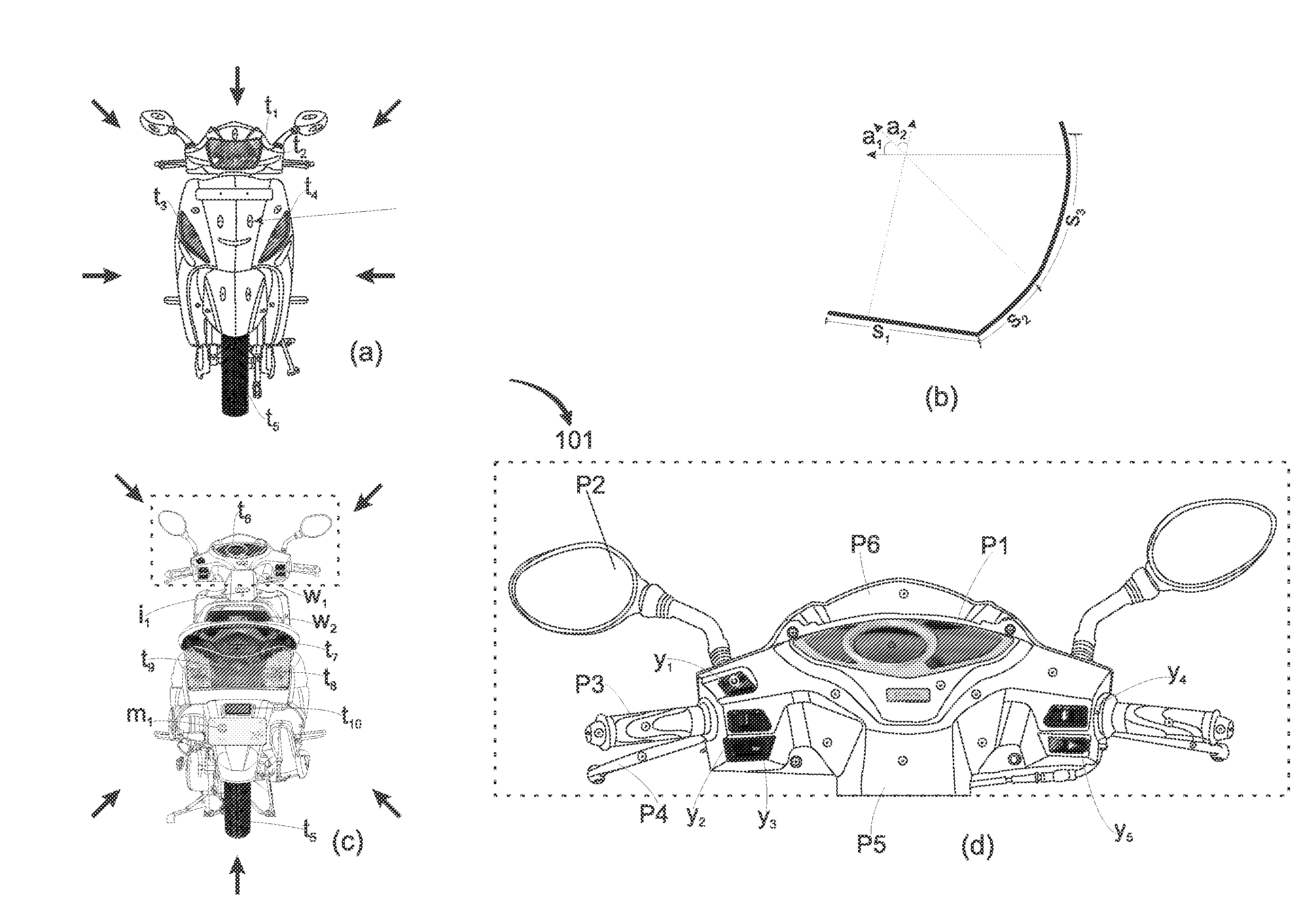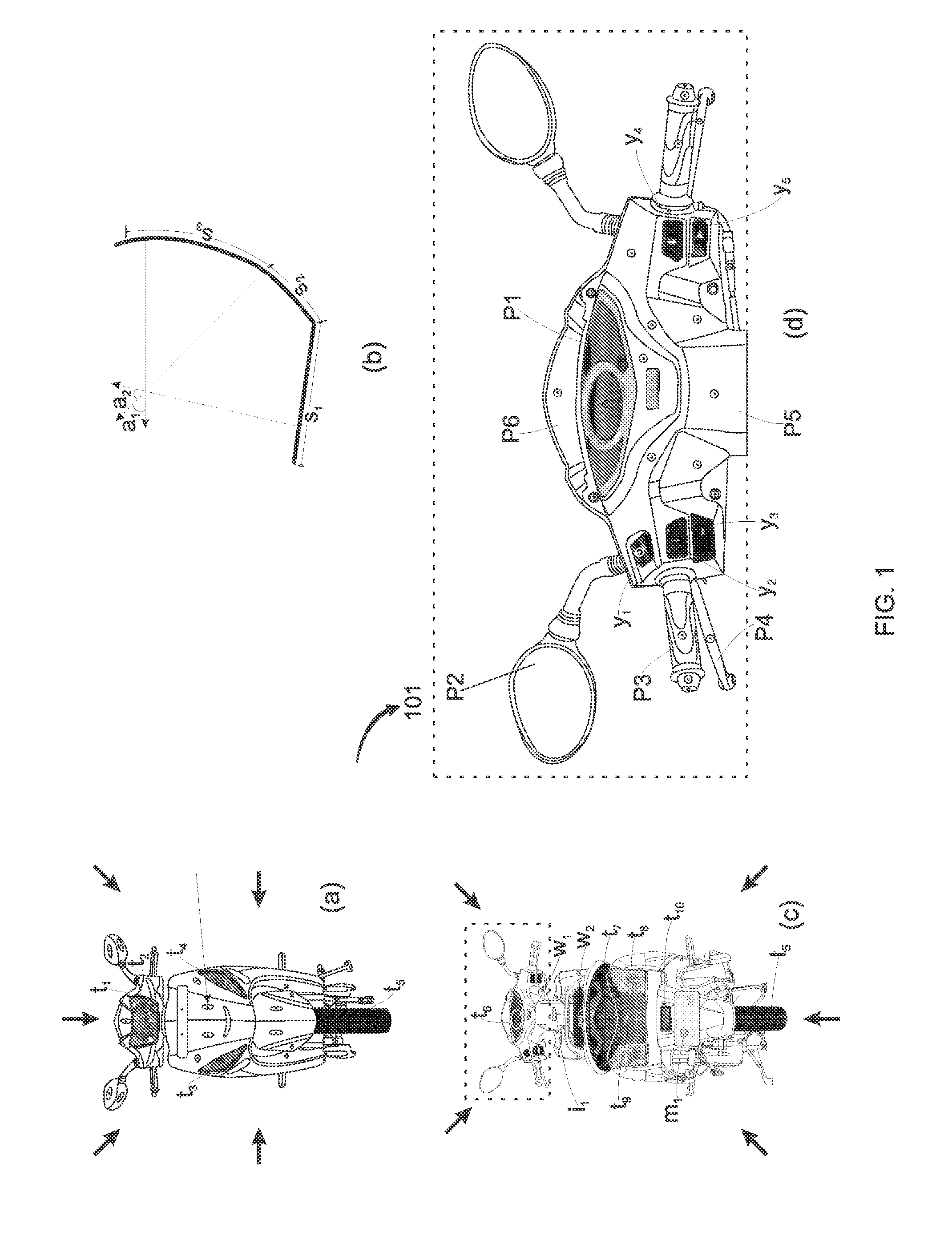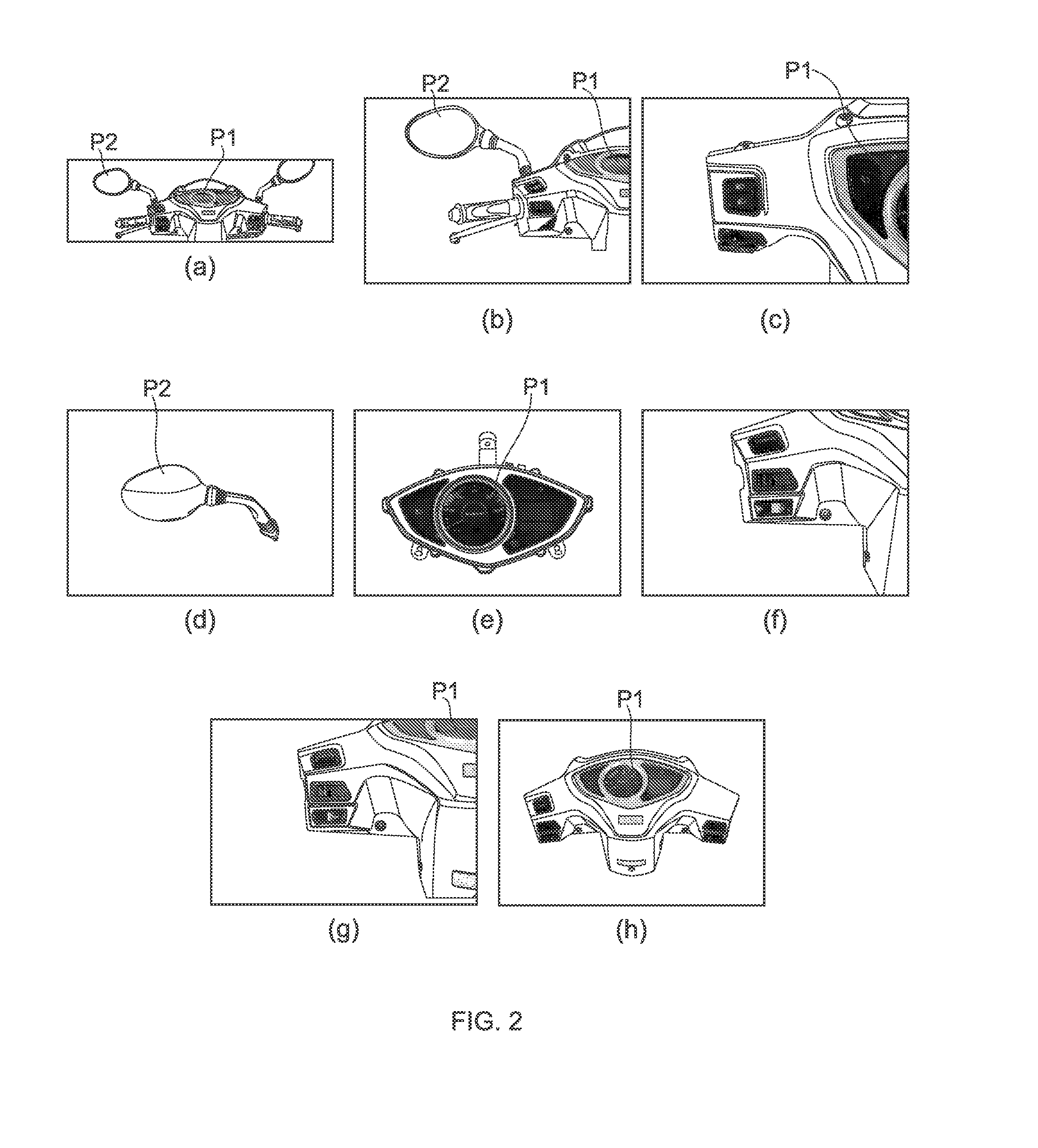A 3D computer
graphics model is a better option to represent a real product, however existing 3D computer graphics model rendered in real-time lack in realism, and look unreal or artificial due to artificial looking texture on the 3D computer graphics model, hereinafter referred to as 3D model.
However the 3D models in such systems still looks cartoonish or artificial due to use of artificial colour or images as texture.
For example, in case of 3D model of a real car textured using conventional texturing methods or techniques, interiors, seats, steering, and other internal and / or external parts looks unreal.
However, it is observed that this kind of
texture mapping gives an artificial look, and the textured 3D models of real 3D objects do not look real.
It is understood that real photographs cannot be replaced by artificial texture because all surfaces of a real object do not carry a single uniform texture pattern, which cannot be created artificially, and that texturing will be an artistic job or not exact like a photograph.
Further, to display reality-based textures during blinking of real light from
light emitting device such as head light of an automotive vehicle, is challenging using conventional texturing techniques, systems or methods.
However, using real photographs for
texture mapping of external and internal surfaces of external and internal parts of 3D model
pose a lot of challenges discussed below.
Currently
texture mapping in computer graphics related to texturing of 3D model are limited to mostly texturing of only exterior or outside region of 3D-models using primarily artificial texture such as images other than photographs, colours using a texture map.
However, retaining precise details, texturing of hidden regions due to fitting of one part with another part (discussed in FIG. 8), and texturing of internal parts to texture 3D model using numerous photographs, say in hundreds or thousands real photographs and / or video is a challenge and problem unaddressed in art.
However, such texturing using conventional techniques, methods and systems cannot provide or retain minute details and vivid appearance in the 3D model.
Further adjusting or calibration of different photographs, and alignment on UV layouts of external and internal surfaces maintaining visual consistency and removing any
distortion or visible artifacts is a difficult problem.
Photograph based texturing of 3D model is a complex problem in
real time rendering (the outcome of user controlled interaction implementation), as image data is heavy compared to using colours as texture.
Although non-real time rendering can
handle very heavy texture, still limited attempts have been made to use real photographs as texture.
However, such attempts could not show real
look and feel as of real object, or in other words the results obtained looked cartoonish.
637-644, 2007, is limited to be used for
carving objects or texturing internal surfaces in
cutting simulation by taking cross-section photographs of real objects.
Additionally, the technique is limited to synthesis of colour by texture
morphing, which is an approximation and not exact representation of factual details of photographs due to difficulty in texturing of internal surfaces using photographs directly.
Further, difficulty increases when the internal surface is also multi-faceted and of complex geometry such as automobile vehicle.
Again further, such 3D computer model cannot represent internal parts which are separable, and texturing of further exterior and inner surface of internal parts becomes very difficult and a challenging problem.
In some implementations costly 3D scanners are used to create 3D models, followed by automated texture mapping usually using images or silhouette images.
Additionally and importantly, scanning interior of car, and further texturing of interior will be very difficult with known systems, and a costly affair.
Therefore, there exists a challenge to texture the 3D models from external or internal surfaces, or on internal parts, using a plurality of real photographs and / or video for providing extremely realistic and detailed view on and / or within the 3D-model.
A further challenge exists to texture the 3D models using photographs / video such that the 3D models are able to support user-controlled interactions or support real-time rendering.
Further, it is also a challenge to obtain a 3D model with texture same and as realistic as of captured photographs of physical object without much increase in the
file size of the texture data of 3D-model.
It is due to the
size increase as one of the problems that most texture mapping processes use only a patch from original photographs of physical objects for texture mapping in one plane, colouring or painting other left-over un-textured portions.
Now, to texture a 3D model of very complicated 3D structure having complex geometry such as automobiles, electronic objects, and machineries etc for external and internal surfaces of external and internal parts using real photographs for retaining factual details is a real challenge and a problem to be solved.
It is relatively easy to texture on the outer body of 3D-model as a whole, but difficulty increases to map texture on functional parts such as keys in mobile as keys, when the functional parts are movable or can be pressed during a user-controlled interaction.
The difficulty level further increases if texture is to be mapped on internal parts such as integrated SIM slot positioned beneath mobile battery, which in turn is positioned beneath battery cover, and the inner side of the battery cover in one example of 3D-model of mobile.
The application of photographic images or video on UV layouts of the functional and internal parts of 3D model for texture mapping, and also simultaneously retaining the functionality of all disintegrated parts is a challenge and a problem unaddressed in the art.
 Login to View More
Login to View More  Login to View More
Login to View More 


